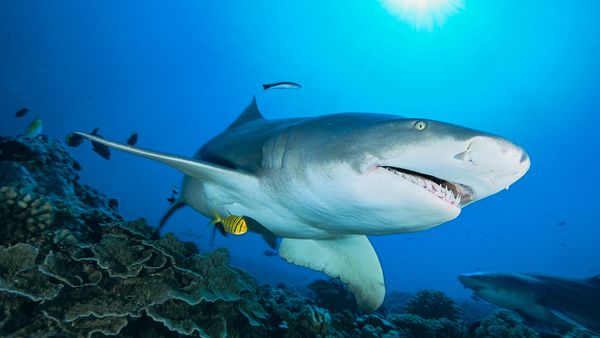The Industrial Revolution was hard on these sharks. Fishermen in the North Atlantic (and other places) harvested the fish en masse for their sizable livers, the oils from which fueled lanterns, lubricated machines and lent themselves to cosmetics.
Today, the basking shark is considered endangered by the International Union for Conservation of Nature (IUCN). Actions have been taken to keep this species afloat, including a 2007 measure which barred commercial fishing vessels from hunting or trans-shipping the peaceful sharks in European Union waters.
Your odds of seeing one may vary by the season. Interested parties in Scotland and New England can observe the fish from springtime to autumn. Experts once thought basking sharks overwintered at the bottom of the sea, hibernating in underwater canyons and whatnot.
Tagged specimens have proven otherwise. At least some of the fish are migratory, following the zooplankton to lower latitudes or deeper waters far offshore when Old Man Winter comes a-knocking.
Lilian Lieber is well-acquainted with their habits. A post-doctoral fellow at Queen’s University Belfast, she’s led multiple studies on the species. “Basking sharks are highly mobile,” Lieber tells us in an email. Other scientists have observed tagged fish descending more than 3,281 feet (1000 meters) below the waves — and they’re fully capable of crossing the Atlantic.
“However, unlike some baleen whales, basking sharks don’t seem to have strict migration routes,” adds Lieber. “Their movements are highly driven by zooplankton dynamics … and their seasonal migrations are more variable.”
New research indicates basking sharks prefer the company of kin. Lieber was the lead author of a genetic tagging report published February 3, 2020, in the journal Nature. She and her colleagues gathered DNA samples from hundreds of individuals in the North Atlantic.
Specifically, they took mucus swabs. “Basking sharks have a relatively thick layer of dark mucus covering their skin and a sample of this mucus (‘slime’) contains their genetic signature,” Lieber says. “We used relatively cheap tools (mostly DIY) to sample basking sharks. For instance, we attached some sterile cotton clothes at the end of an extendable pole.”
Aboard small boats, the researchers would drift beside each fish and carefully “[swab] the pole in the region of their large dorsal fin.” The data paints an interesting picture: Apparently, sharks who forage together tend to have more genetic similarities than we might expect. Future conservation efforts may benefit from this discovery.

